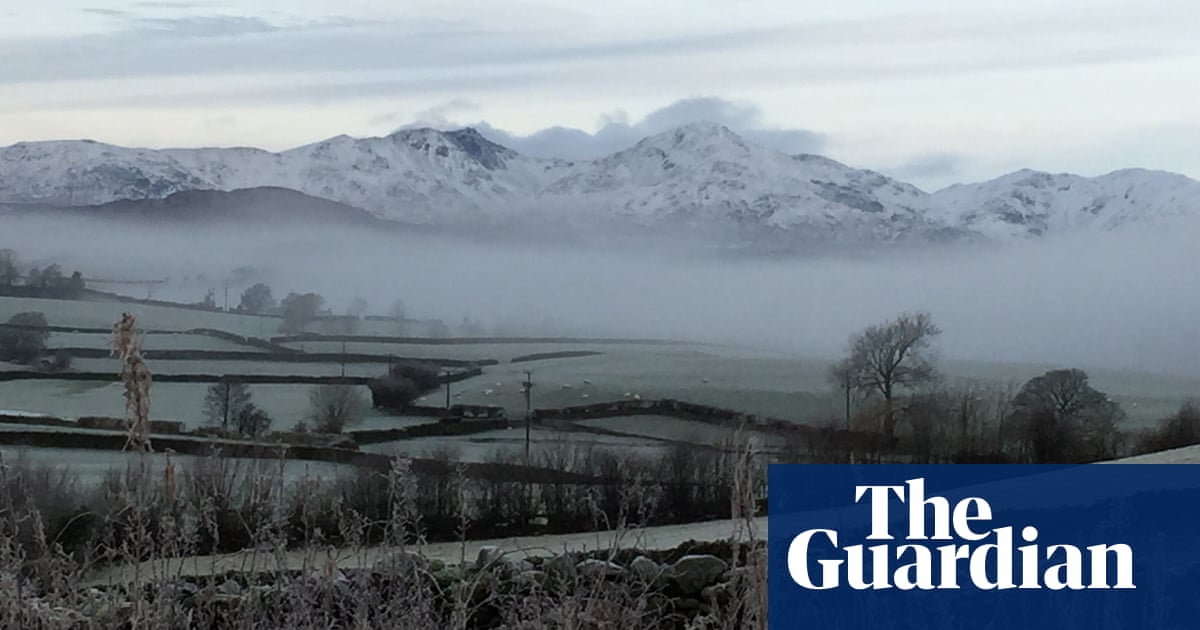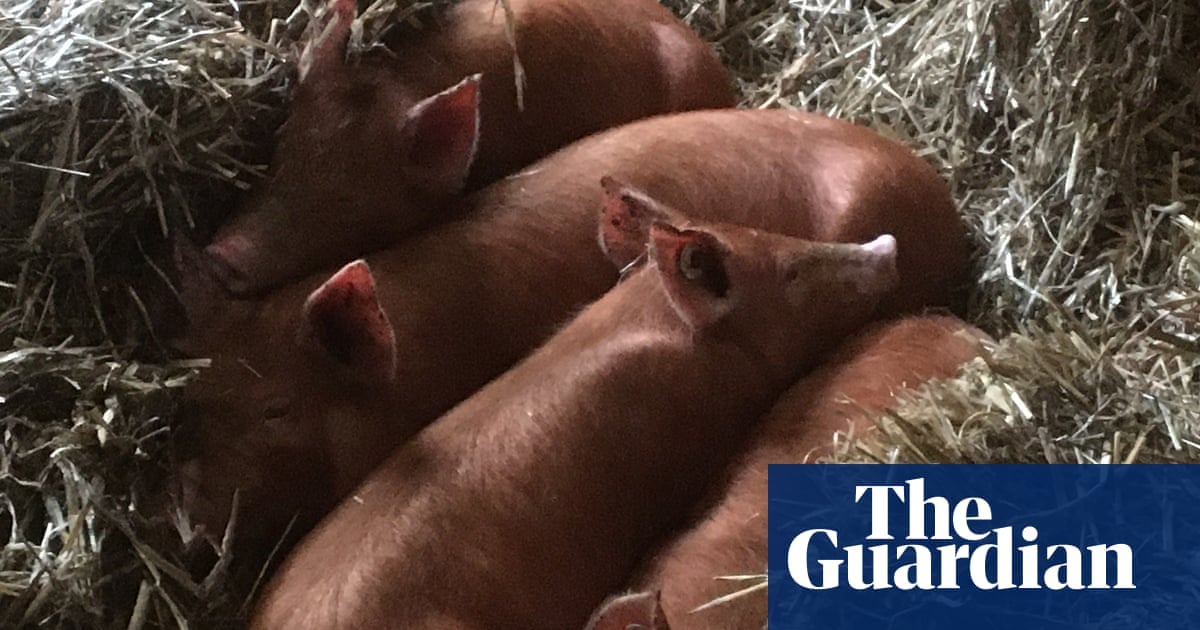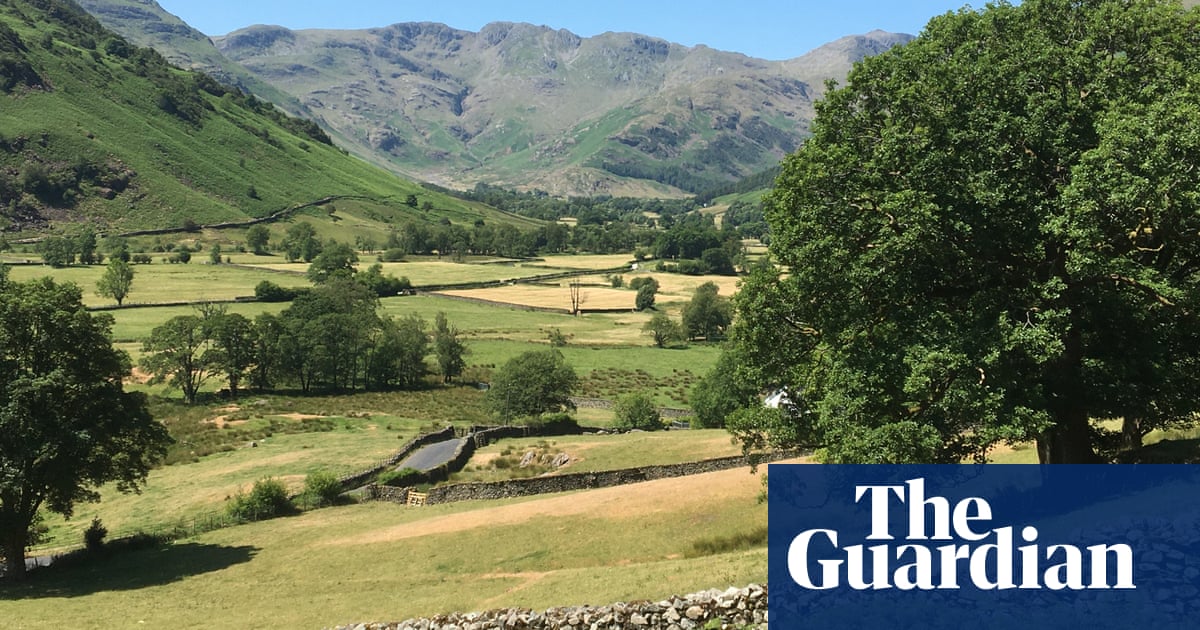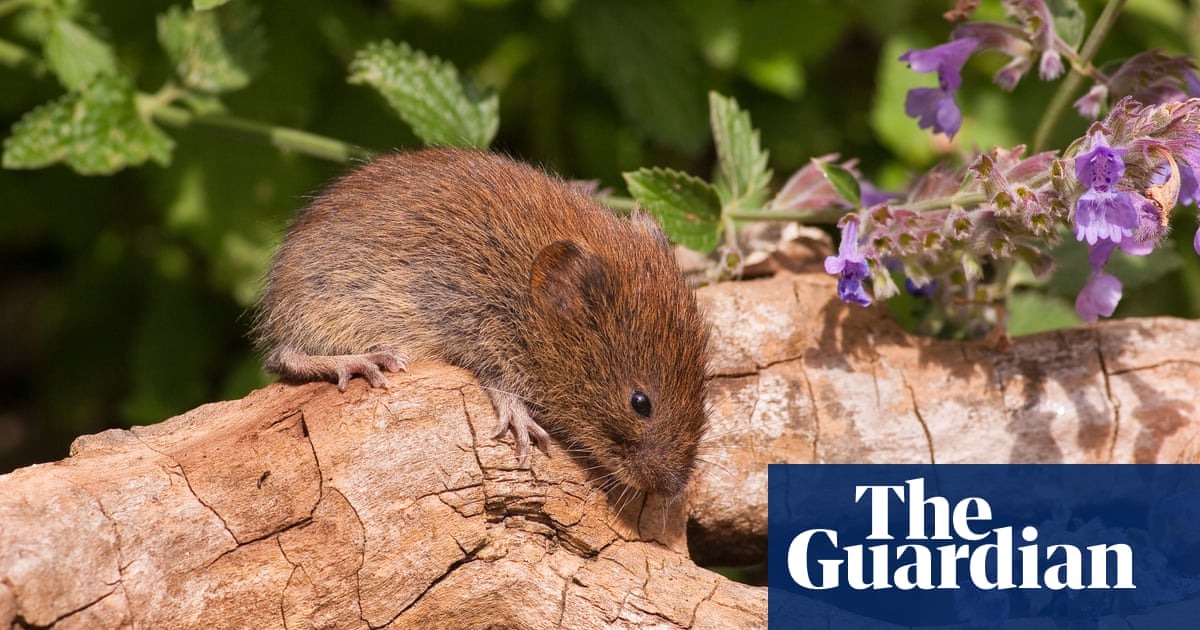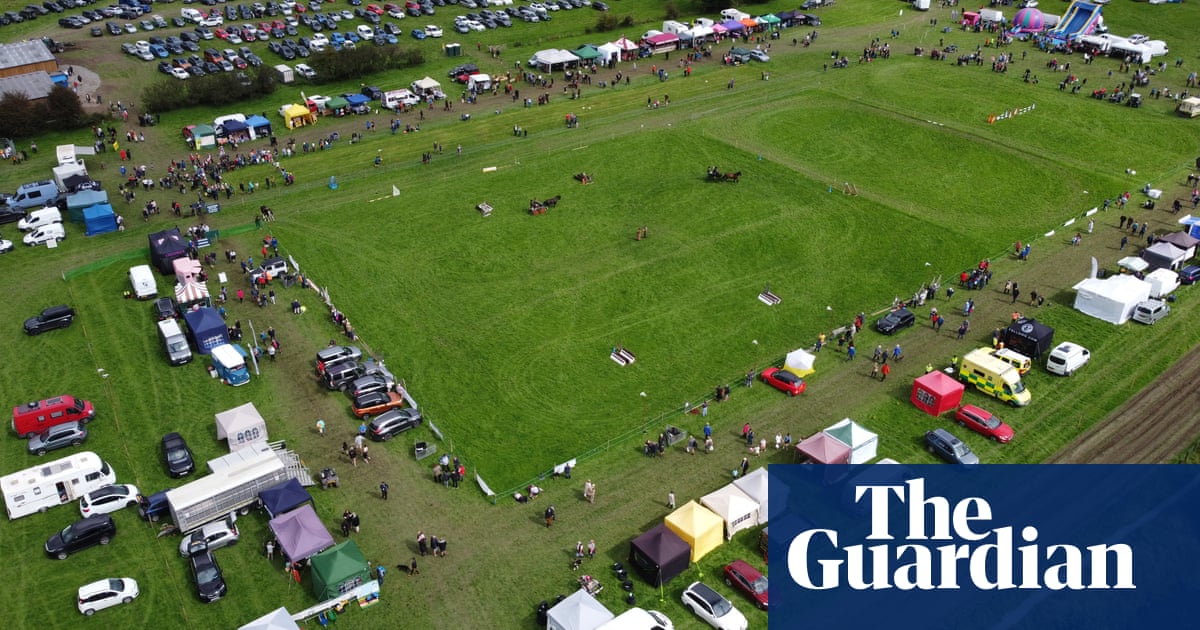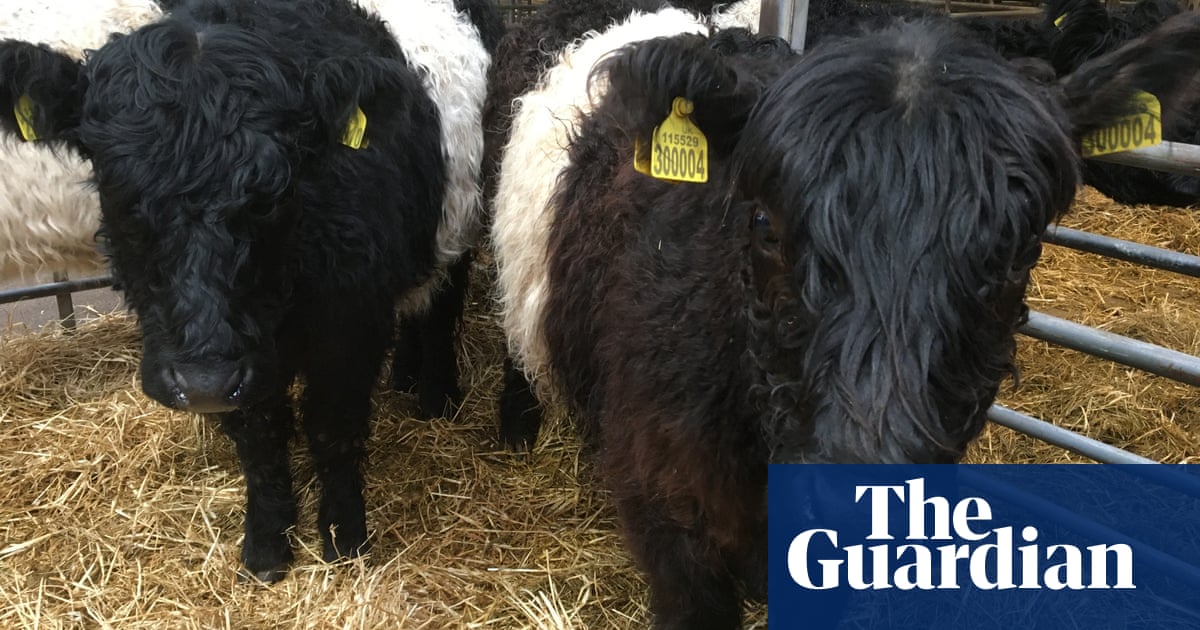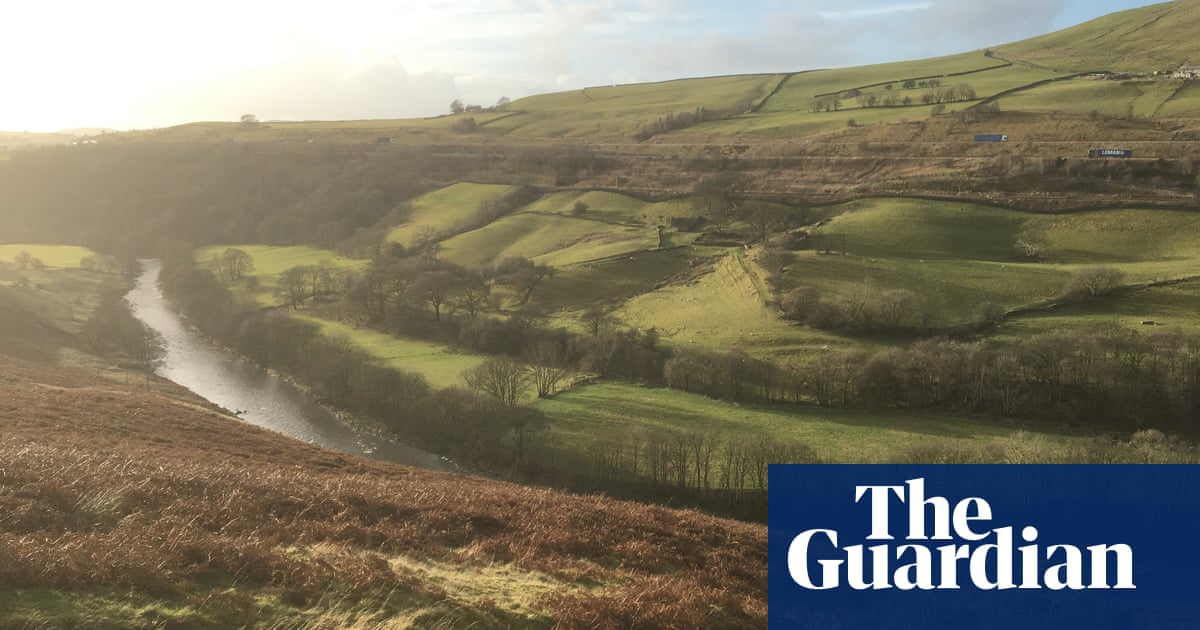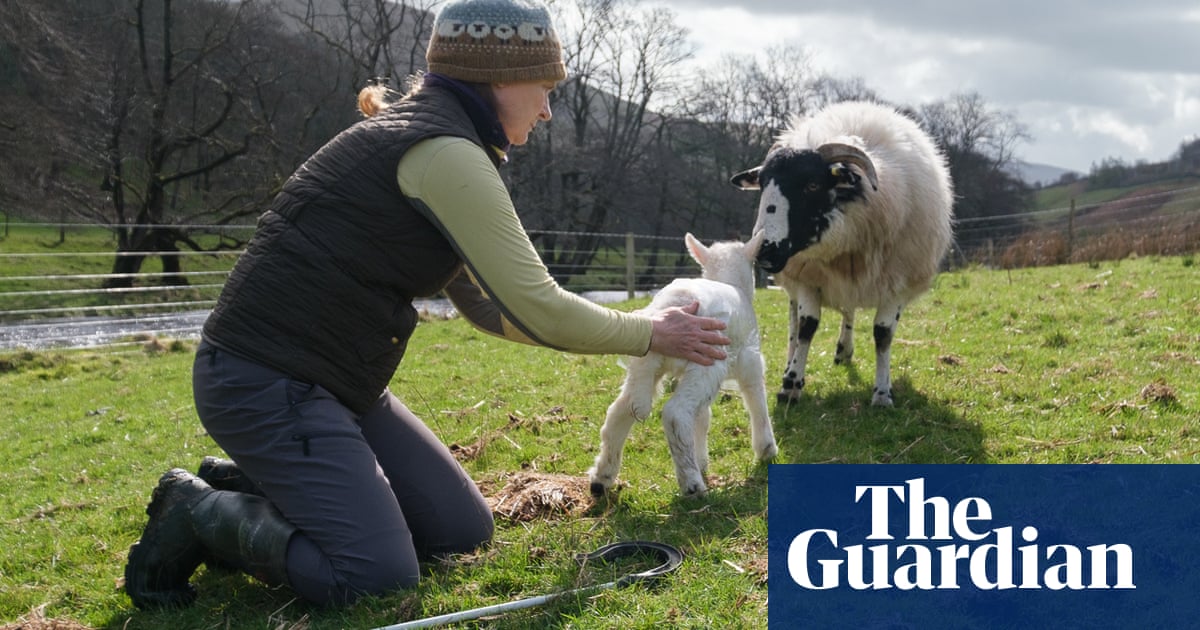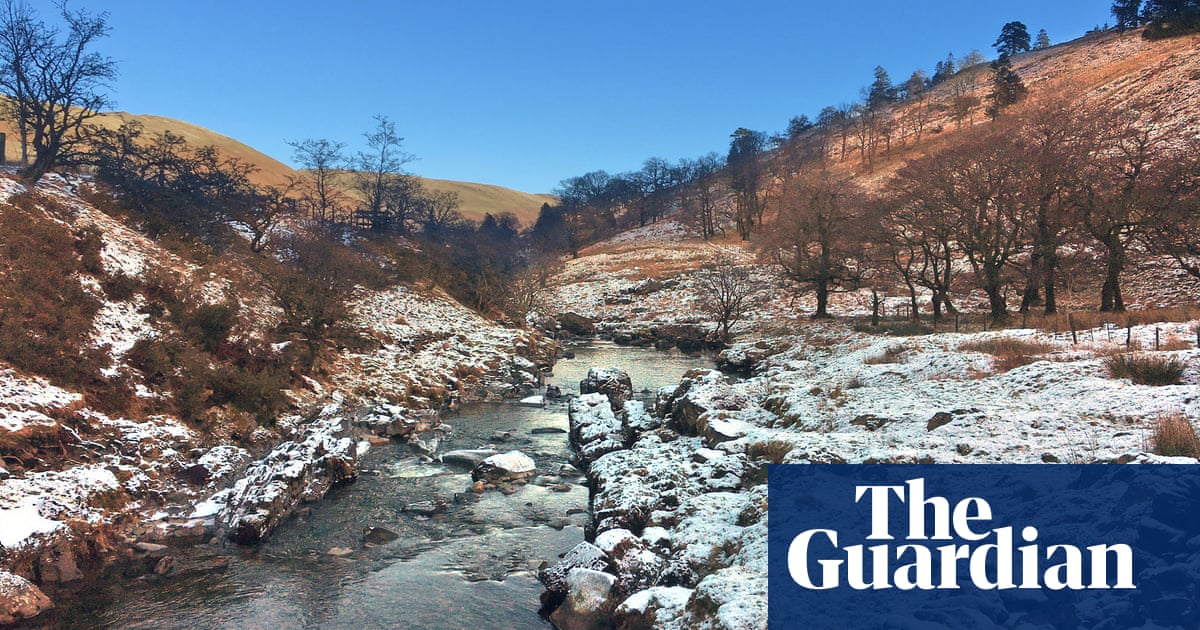
The valley bottom gets no direct sunlight at this time of year, and the cold is biting. I am walking along next to the beck with two farming officers from the national park authority. The track is covered in sheet ice, and we have to walk along the tussocky edges in order to get anywhere.
Today we have an outdoor meeting about how the wood pasture – which is grazed by cows during the summer months – might benefit from more targeted habitat management. My idea is to use Nofence collars.
These collars, approved by Defra, use GPS technology to create invisible “fencing”, drawn by the farmer on an app on their mobile phone. If a cow gets near the boundary, the collar emits a sound, then a small electric pulse (about 1-2% of the pulse of a normal livestock electric fence), warning it to move away. The cows then learn to avoid the boundary in the first place. The collar also sends the farmer an alert if a cow escapes or has not moved for a while, which can suggest it is in trouble.
One of the main benefits is that I’d be able to see where the cows were before I set off to check on them every day, saving hours each week looking for them. It would also help keep the cows in certain areas, away from walkers and in the parts where bracken needs bashing. And it could mean that when fencing comes down it may not need to be replaced, leaving the landscape looking more natural. I’m a traditional farmer, and technology comes slowly to the hills, but after some initial hesitation I can see this could be a gamechanger for us.
The meeting is productive and I hope to get grant funding for the collars. As we edge our way along the valley, it’s hard to imagine that soon it will be bursting with spring life. We arrive back in the farmyard; the cows hear us and call for more hay to be forked up for them to eat. As I break open the bale, the air is filled with the smell of summer meadows and promises of days to come.




